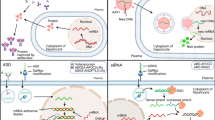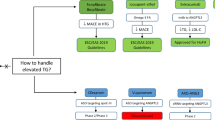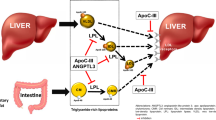Opinion statement
Hyperlipidemia with a marked increase of low-density lipoprotein (LDL) and highdensity lipoprotein (HDL) cholesterol levels is a common feature in patients with chronic cholestatic liver disease. Excess morbidity and mortality from cardiovascular disease has not been reported in these patients. This may be due to the particular lipoprotein pattern observed during chronic cholestasis, characterized by elevated serum HDL cholesterol, which may have a cardioprotective effect. However, in a subgroup of patients with chronic cholestasis, hyperlipidemia is characterized by markedly elevated LDL levels with normal or low HDL levels, probably reflecting hypercholesterolemia with coexisting familial and nutritional origins. Ursodeoxycholic acid, the only drug approved for the treatment of chronic cholestatic liver diseases, has been shown to slightly decrease serum cholesterol concentrations. However, the extent of LDL reduction by ursodeoxycholic acid may be insufficient to protect this subgroup of patients from increased cardiovascular risk. Patients in this subgroup probably would benefit from dietary modification, weight loss, and the administration of specific lipid-lowering drugs. Cholestyramine, which is the first-line treatment for pruritus in chronic cholestasis, may be also indicated for its cholesterol-lowering capacity in patients with hypercholesterolemia who complain of pruritus. Administration of 3-hydroxy-3-methylglutaryl coenzyme A (HMG CoA) reductase inhibitors (simvastatin or pravastatin, 20 mg/d) should be limited to hypercholesterolemic patients with mild chronic cholestatic liver diseases in whom HDL serum levels are below the protective range or if additional risk factors for cardiovascular diseases are present.
Similar content being viewed by others
References and Recommended Reading
McIntyre N, Harry DS, Pearson AJG: Progress report: the hypercholesterolemia of obstructive jaundice. Gut 1975, 16:379–391.
Miettinen TA: Lipid absorption, bile acid and cholesterol metabolism in patients with chronic liver disease. Gut 1972, 13:682–689.
Nikkilä K, Miettinen TA: Serum cholesterol precursors, cholestanol, and plant sterols in primary biliary cirrhosis. Scand J Gastroenterol 1988, 23:967–972.
Crippin JS, Lindor KD, Jorgensen R, et al.: Hypercholesterolemia and atherosclerosis in primary biliary cirrhosis: what is the risk? Hepatology 1992, 15:858–862. Study on alterations of cholesterol metabolism and mortality for cardiovascular disease in patients with PBC.
Van Dam GM, Gips CH: Primary biliary cirrhosis in the Netherlands. An analysis of associated diseases, cardiovascular risk, and malignancies on the basis of mortality figures. Scand J Gastroenterol 1997, 32:77–83.
Longo M, Crosignani A, Battezzati PM, et al.: Hyperlipidemic state and cardiovascular risk in primary biliary cirrhosis [abstract]. Dig Dis Wkly 2000, 2406:A468.
Jahn CE, Schaefer EJ, Taam LA, et al.: Lipoprotein abnormalities in primary biliary cirrhosis. Gastroenterology 1985, 89:1266–1278.
Agorastos J, Fox C, Harry DS, McIntyre N: Lecitin-cholesterol acyltransferase and the lipoprotein abnormalities of obstructive jaundice. Clin Sci Molec Med 1978, 54:369–379.
Rössner ST, Befrits R, Carlson K, et al.: Serum lipoproteins and lipase activities in primary biliary cirrhosis. Eur J Gastroenterol 1991, 3:271–276.
Feinstein AR, Pritchett JA, Scimpff CR: The epidemiology of cancer therapy. II. The clinical course: data, decisions, and temporal demarcations. Arch Intern Med 1969, 123:323–344.
Pekkanen J, Linn S, Heiss G, et al.: Ten-year mortality from cardiovascular disease in relation to cholesterol level among men with and without preexisting cardiovascular disease. N Engl J Med 1990, 322:1700–1707.
Poupon RE, Oguerram K, Chrétien Y, et al.: Cholesterollowering effect of ursodeoxycholic acid in patients with primary biliary cirrhosis. Hepatology 1993, 17:577–582.
Miettinen TA, Färkkilä M, Vuoristo M, et al.: Serum cholestanol, cholesterol precursors, and plant sterols during placebo-controlled treatment of primary biliary cirrhosis with ursodeoxycholic acid or colchicine. Hepatology 1995, 21:1261–1268. A randomized placebo-controlled 2-year study on cholesterol metabolism in patients with PBC during ursodeoxycholic acid and colchicine administration.
LaRosa J: Review of clinical studies of bile acid sequestrants for lowering plasma lipid levels. Cardiology 1989, 76:55–61.
Expert Panel on Detection, Evaluation and Treatment of High Blood Cholesterol in Adults: Summary of the second report of the national cholesterol education program (NCEP) expert panel on detection, evaluation, and treatment of high blood cholesterol in adults (Adult Treatment Panel II). JAMA 1993, 269:3015–3023.
Del Puppo M, Galli Kienle M, Crosignani A, et al.: Cholesterol metabolism in hypercholesterolemic patients with primary biliary cirrhosis during simvastatin and ursodeoxycholic acid administration: a pilot study. J Lipid Res 2001, In press. A pilot study on the cholesterol metabolism in patients with PBC during administration of simvastatin and ursodeoxycholic acid.
Kamisako T, Adachi Y: Marked improvement in cholestasis and hypercholesterolemia with simvastatin in a patient with primary biliary cirrhosis. Am J Gastroenterol 1995, 90:1187–1188.
Kurihara T, Akimoto M, Abe K, et al.: Experimental use of pravastatin in patients with primary biliary cirrhosis associated with hypercholesterolemia. Clin Ther 1993, 15:890–898.
Author information
Authors and Affiliations
Rights and permissions
About this article
Cite this article
Longo, M., Crosignani, A. & Podda, M. Hyperlipidemia in chronic cholestatic liver disease. Curr Treat Options Gastro 4, 111–114 (2001). https://doi.org/10.1007/s11938-001-0022-6
Issue Date:
DOI: https://doi.org/10.1007/s11938-001-0022-6




